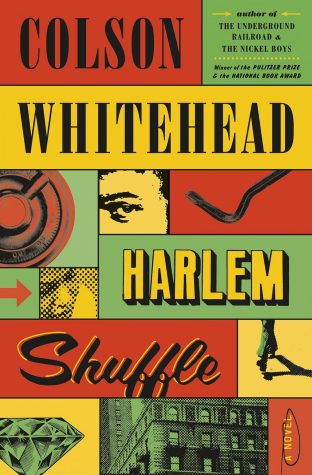REVIEW: “Harlem Shuffle” continues the incredible storytelling of Colson Whitehead
If you’re looking for a fast-paced, immersive story of a jewel heist and the ripple effect it has on a community, Colson Whitehead’s new novel “Harlem Shuffle” is for you.

“Harlem Shuffle” is the latest book from Whitehead, who won Pulitzer Prizes for his previous books “The Nickel Boys” and “The Underground Railroad. Released on Sept. 14, the book follows Ray Carney, a furniture salesman in Harlem across three summers as his family grows and he begins to embark on a path of crime. “Harlem Shuffle” is a story of family and dreams as Carney begins to fence stolen jewelry as a means to improve his family’s social standing.
Whitehead creates a version of late 50s and early 60s Harlem with the precision and attention to detail of a master craftsman, building a reflection of the past that feels all too familiar to modern life. Always tracking the connection between past and present, Whitehead illuminates the same struggles of class, race and gentrification that continue to shape Americans’ lives today. Readers join Carney in his conflict between his father’s legacy of crime and the future he is establishing as an honest business man, an internal struggle that blurs the lines between the realms of good and evil within ourselves.
Carney’s desire to move up in the world guides his actions throughout the book, as he struggles to define himself and find a home in the city. He is constantly told that he does not belong and will never be good enough for his wife’s family and the members of his father-in-law’s club. Yet, despite being told he could never achieve his dreams or find acceptance in Harlem’s upper echelon, Carney refuses to define himself by the expectations of others. This is what makes Carney such a compelling main character. He demonstrates the ability to remove his self-worth from what other people want him to be and refuses to fall into their definitions of a socially acceptable man. Instead, he chooses to be his own person.
Whitehead poses: Where do we draw the line between justifying our actions as a necessary evil, and when do they begin to define our legacies, the versions of us that exist in other people’s minds?
In “Harlem Shuffle” these questions are left to the readers, as characters exist in the grey space, filled with crooked cops, thieves, corrupt officials and people struggling to find where they belong in the world. The book follows Carney as he descends further into this grey area, establishing an identity outside of his role as a family man.
Whitehead leaves readers to ponder the question of what it means to achieve the American dream. Carney reshapes his principles and accepts the role of a fencer, eventually succeeding in the job, striving to become the best he can be. This drive to better himself is the defining principle of the American dream. Although as the first business owner and college graduate in his family, Carney’s path to success is not as easy as the white businessmen in the book.
“Harlem Shuffle” shines in the realism it creates, the themes of power, influence, race and revenge have shaped modern New York City and every other American city built on a foundation of inequality and corruption. The book brings readers into each aspect of these themes, not to justify the actions of the characters, but to show how they impact their lives on a larger scale.
Across the Harlem summers, Carney notes the changes to his community, noting the impact of consumer culture on the ever-changing store fronts, new skyscrapers and the racism he experiences as the city’s process of gentrification impacts his neighborhood.
Whitehead sets himself apart from other writers. Rather than limit himself to the restrictions of Carney’s view of the world, he expands upon other characters, making them more dimensional and appealing to the reader. To read “Harlem Shuffle” is to learn more about the human soul. Every decision has a consequence and the world is not as narrow as it seems in our own perception of it. Whitehead brings readers into the past of these characters, the defining moments from their lives, the loves, the losses and how their current behaviors are impacted by the past.
The events in the final section of the book coincide with the 1964 murder of a 15-year-old Black teenager killed by a white police officer—an all too familiar reality. The ensuing riots are depicted as ranging from an unfortunate incident, the expected result from a hot summer, or a chance for meaningful change to finally occur in the city. This multi-perspective discussion of the riots mirrors modern conversations about the aftermath of police brutality and the lack of justice, or acknowledgement of wrongdoing that victims and members of the community receive from the police.
Change is at the center of “Harlem Shuffle” as Carney becomes a new version of himself with each passing summer, marching towards an unknown destiny. Once again, Whitehead prevails in nuanced characters that present a snapshot of the past and a mirror to the future.










